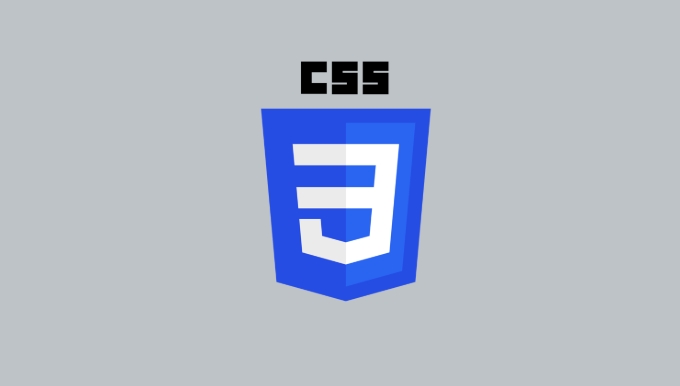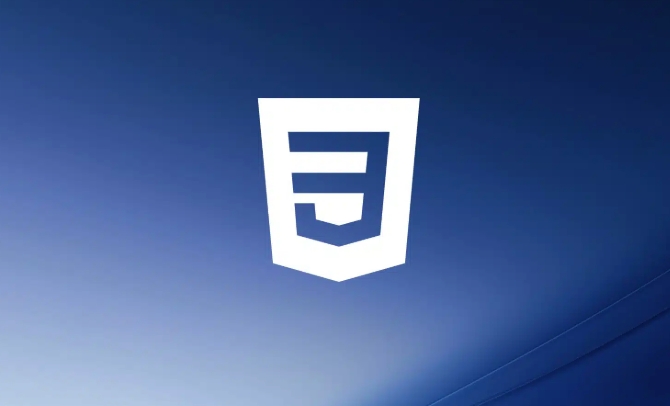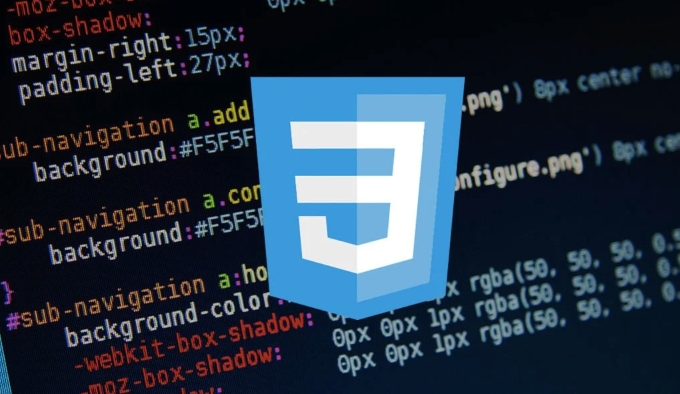The key to CSS animation is to master the use of @keyframes and animation attributes. 1. @keyframes is used to define animation keyframes, and set the state of different stages of the animation through from/to or percentage; 2. The animation attribute applies animation to elements, including settings such as name, duration, easing function, delay and number of playbacks; 3. The code can be simplified by abbreviated attributes, and the effect of staggered playback of multiple elements is achieved using animation-delay; 4. Pay attention to browser compatibility, performance optimization, triggering methods and keeping animations simple. By mastering these core points, you can easily create smooth and beautiful CSS animations.

CSS animation is actually not that difficult, especially for beginners. As long as you master the basic structure and several key attributes, you can create a smooth and beautiful effect. This article will start with the simplest example and help you understand how to use CSS to make animations.

1. First find out what @keyframes is
If you want to do animation, you must first learn to define keyframes. @keyframes is used to tell the browser what animation should look like at different stages.

For example, if you want to make an animation of a small square moving from left to right, you can write it like this:
@keyframes move {
from {
transform: translateX(0);
}
to {
transform: translateX(200px);
}
}You can also use percentages to control a finer rhythm, such as:

@keyframes fadeIn {
0% { opacity: 0; }
50% { opacity: 0.5; }
100% { opacity: 1; }
} Remember: @keyframes just defines "what the animation looks", but has not been applied to any elements yet.
2. Add animation to the element
After defining the animation, the next step is to use it on a certain element. This requires the use of the animation attribute or its sub-properties.
For example, if you want a div to move, you can write it like this:
.box {
animation-name: move;
animation-duration: 2s;
animation-timing-function: ease-in-out;
animation-delay: 0.5s;
animation-iteration-count: infinite;
}These properties control:
- Animation name (must be consistent with
@keyframes' name) - Duration
- Easing function (speed change method)
- How long does it take to start
- How many times does the animation play (infinite means infinite loop)
Of course you can also abbreviate it as one line:
animation: move 2s ease-in-out 0.5s infinite;
3. Simple and practical example: loading animations
Newbies can practice from a common loading animation - the kind that appears and disappears in sequence.
The HTML structure is roughly like this:
<div class="loader"> <span>.</span> <span>.</span> <span>.</span> </div>
Then the CSS animation can be written like this:
@keyframes blink {
0%, 80%, 100% { opacity: 0; }
40% { opacity: 1; }
}
.loader span {
display: inline-block;
animation: blink 1.4s infinite ease-in-out both;
}
.loader span:nth-child(2) {
animation-delay: 0.2s;
}
.loader span:nth-child(3) {
animation-delay: 0.4s;
} The key to this example is to use different animation-delay for each point to achieve the staggered effect.
4. Pay attention to a few places that are easy to ignore
- Browser Compatibility : Most modern browsers support
animation, but if you want to be compatible with older versions of IE, you may need to add-webkit-or other prefix. - Performance issues : Don’t add complex animations to too many elements, as they will affect the performance of the page.
- Triggering method : The default animation is executed when the page is loaded. If you want to move only when clicking or hovering, you can use
:hoveror JS to control it. - Keep it simple : Don’t pursue complex effects at the beginning, it’s more important to master the basic structure first.
Basically that's it. CSS animations look a bit more attributes, but just remember @keyframes to define actions, animation control playback, and combine them with some common attributes to create good animations easily.
The above is the detailed content of Simple CSS animation tutorial for beginners. For more information, please follow other related articles on the PHP Chinese website!

Hot AI Tools

Undress AI Tool
Undress images for free

Undresser.AI Undress
AI-powered app for creating realistic nude photos

AI Clothes Remover
Online AI tool for removing clothes from photos.

Clothoff.io
AI clothes remover

Video Face Swap
Swap faces in any video effortlessly with our completely free AI face swap tool!

Hot Article

Hot Tools

Notepad++7.3.1
Easy-to-use and free code editor

SublimeText3 Chinese version
Chinese version, very easy to use

Zend Studio 13.0.1
Powerful PHP integrated development environment

Dreamweaver CS6
Visual web development tools

SublimeText3 Mac version
God-level code editing software (SublimeText3)

Hot Topics
 How can I include CSS only on some pages?
Jun 11, 2025 am 12:01 AM
How can I include CSS only on some pages?
Jun 11, 2025 am 12:01 AM
There are three ways to selectively include CSS on a specific page: 1. Inline CSS, suitable for pages that are not frequently accessed or require unique styles; 2. Load external CSS files using JavaScript conditions, suitable for situations where flexibility is required; 3. Containment on the server side, suitable for scenarios using server-side languages. This approach can optimize website performance and maintainability, but requires balance of modularity and performance.
 Flexbox vs Grid: Understanding the Key Differences in CSS Layout
Jun 10, 2025 am 12:03 AM
Flexbox vs Grid: Understanding the Key Differences in CSS Layout
Jun 10, 2025 am 12:03 AM
Flexboxisidealforone-dimensionallayouts,whileGridsuitstwo-dimensional,complexlayouts.UseFlexboxforaligningitemsinasingleaxisandGridforprecisecontroloverrowsandcolumnsinintricatedesigns.
 Creating an Auto-Closing Notification With an HTML Popover
Jun 10, 2025 am 09:45 AM
Creating an Auto-Closing Notification With an HTML Popover
Jun 10, 2025 am 09:45 AM
The HTML popover attribute transforms elements into top-layer elements that can be opened and closed with a button or JavaScript. Popovers can be dismissed a number of ways, but there is no option to auto-close them. Preethi has a technique you can u
 What is 'render-blocking CSS'?
Jun 24, 2025 am 12:42 AM
What is 'render-blocking CSS'?
Jun 24, 2025 am 12:42 AM
CSS blocks page rendering because browsers view inline and external CSS as key resources by default, especially with imported stylesheets, header large amounts of inline CSS, and unoptimized media query styles. 1. Extract critical CSS and embed it into HTML; 2. Delay loading non-critical CSS through JavaScript; 3. Use media attributes to optimize loading such as print styles; 4. Compress and merge CSS to reduce requests. It is recommended to use tools to extract key CSS, combine rel="preload" asynchronous loading, and use media delayed loading reasonably to avoid excessive splitting and complex script control.
 How to use Lotties in Figma
Jun 14, 2025 am 10:17 AM
How to use Lotties in Figma
Jun 14, 2025 am 10:17 AM
In the following tutorial, I will show you how to create Lottie animations in Figma. We'll use two colorful designs to exmplify how you can animate in Figma, and then I'll show you how to go from Figma to Lottie animations. All you need is a free Fig
 Breaking Boundaries: Building a Tangram Puzzle With (S)CSS
Jun 13, 2025 am 11:33 AM
Breaking Boundaries: Building a Tangram Puzzle With (S)CSS
Jun 13, 2025 am 11:33 AM
We put it to the test and it turns out Sass can replace JavaScript, at least when it comes to low-level logic and puzzle behavior. With nothing but maps, mixins, functions, and a whole lot of math, we managed to bring our Tangram puzzle to life, no J
 External vs. Internal CSS: What's the Best Approach?
Jun 20, 2025 am 12:45 AM
External vs. Internal CSS: What's the Best Approach?
Jun 20, 2025 am 12:45 AM
ThebestapproachforCSSdependsontheproject'sspecificneeds.Forlargerprojects,externalCSSisbetterduetomaintainabilityandreusability;forsmallerprojectsorsingle-pageapplications,internalCSSmightbemoresuitable.It'scrucialtobalanceprojectsize,performanceneed
 Does my CSS must be on lower case?
Jun 19, 2025 am 12:29 AM
Does my CSS must be on lower case?
Jun 19, 2025 am 12:29 AM
No,CSSdoesnothavetobeinlowercase.However,usinglowercaseisrecommendedfor:1)Consistencyandreadability,2)Avoidingerrorsinrelatedtechnologies,3)Potentialperformancebenefits,and4)Improvedcollaborationwithinteams.






